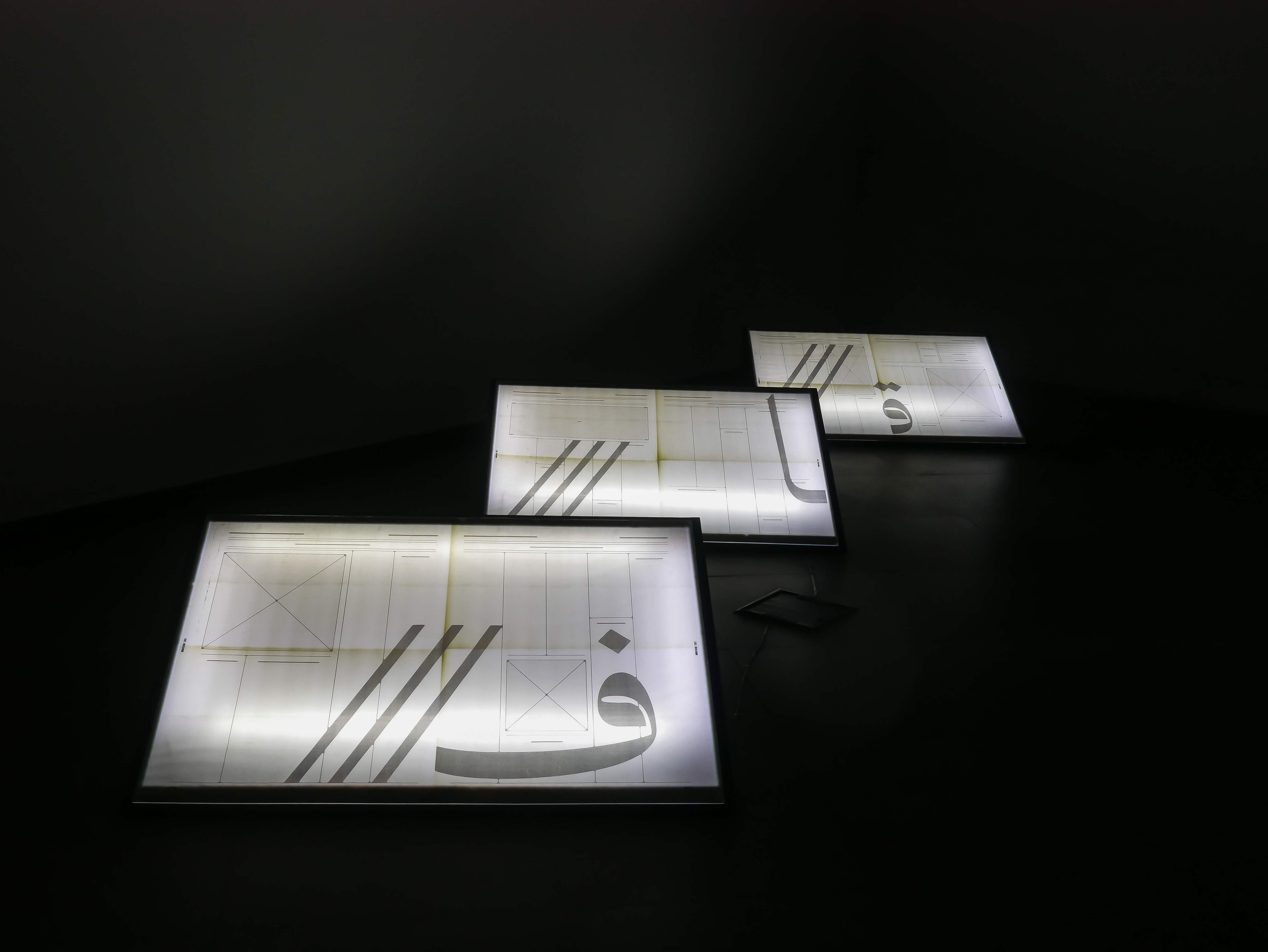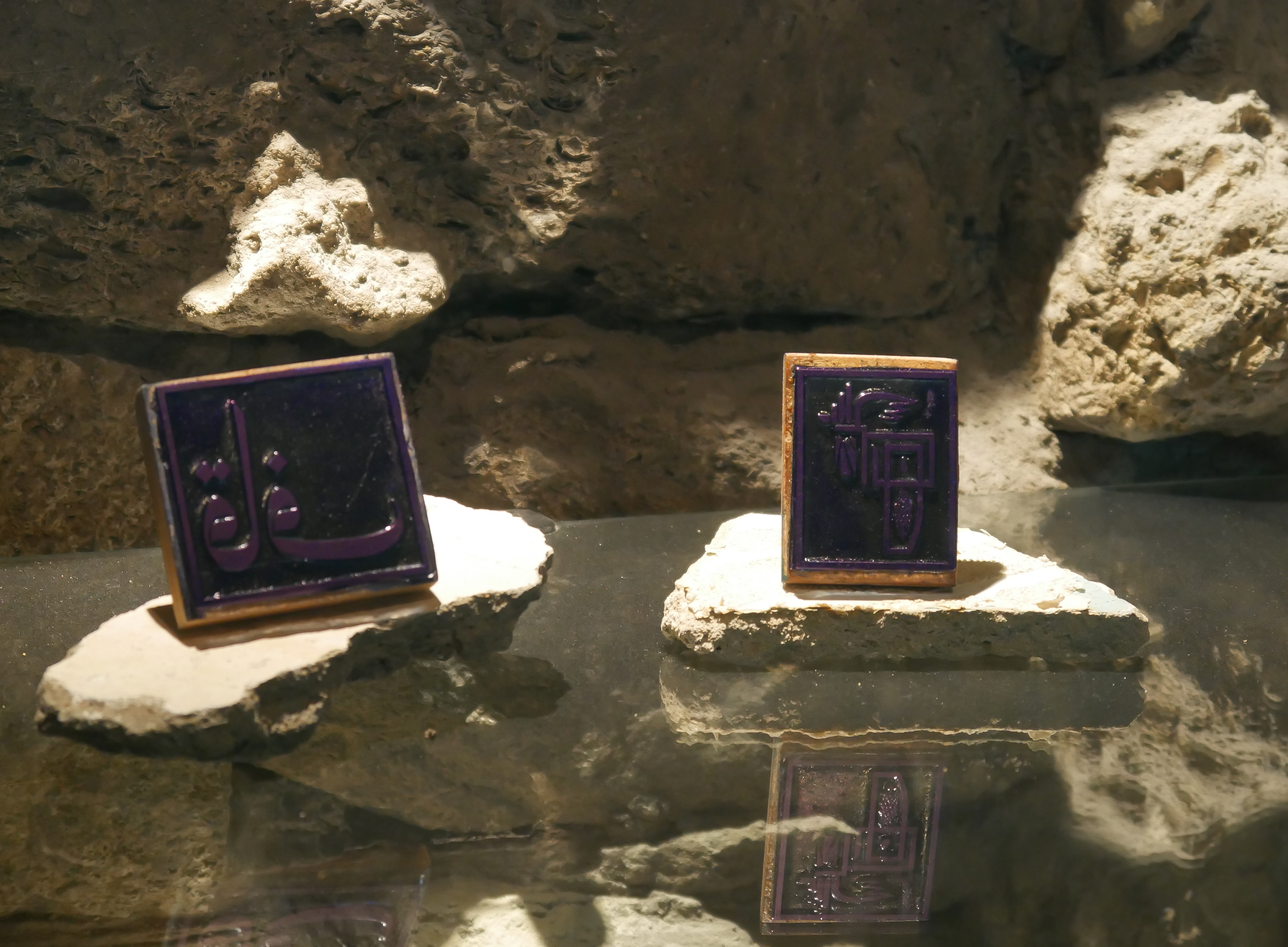Installation with customized newspaper, customized stamp, acrylic, wood, LED light, glass, vinyl and video. Dimensions variable, 2019 | Graphic and type design: Sina Fakour
ق /Qāf/ is the 24th letter of the Persian alphabet and 21st letter of the Arabic alphabet, and the name of the imaginary mountain range: kohi-Qaf، کوه قاف (Persian)، جبل قاف (Arabic) in popular Middle Eastern mythology. The ‘emerald mountains,’ ‘purgatory mountains’ and Jinnistan (the land of the jinn) are only some of the mythological descriptions of Qāf. Most famously, in Farid ud-Din Attar’s Manṭiq-uṭ-Ṭayr (The Speech of the Birds), phoenix (simurgh), the mythical bird of wisdom, lives in isolation on top of Mount Qāf where thirty birds travel across the Seven Cities of Love to reach; therefore kohi-Qaf is a metaphor for the farthest destination and most arduous journey. Qāf has been interpreted as the Caucasus (Qafqaz) Mountains stretching between The Black Sea and The Caspian Sea. The word Qāf is the Arabized form of the Middle Persian word gâp meaning "unknown."
***
Thinking through the role of the newsprint industry in the creation of imagined communities (Anderson) as nations, Qaf reflects on the history of nation-building and the rise of nationalism in The Caucasus. Informed by the history of newsprint in Azerbaijan and in conversation with graphic and type designer, Sina Fakour, the artist designed a newspaper and customized stamps for the mythological region of Qaf. Using elements from the official airmail logo of countries that were partially or wholly part of The Caucasus, the Qaf air mail logo is comprised of deconstructed elements from symbols, shapes and design elements from Russia, Turkey, Iran, Azerbaijan, Armenia and Georgia.


Top Image: THIS GEOGRAPHICAL TREATISE and collection of wondrous tales was exceedingly popular in medieval and early modern Islamic society. The map shown here is unusual in its portrayal of several creatures supporting the world in the firmament. While it uses a traditional Islamic projection of the world as a flat disk surrounded by the sundering seas, which are restrained by the encircling mountains of Qaf, the map also shows the Ottomans' early use of geographic information based upon European cartographic methodologies and explorations.
Zekeriya Kazvinî. Acaib-ül Mahlûkat (The Wonders of Creation). Translated into Turkish from Arabic. Istanbul, ca. 1553. Near East Section, African and Middle Eastern Division, Library of Congress









Bottom: Installation view at Experiential Time, curated by Anna Fech.
Commissioned by YARAT Contemporary Art Space. Photos: Ryts Monet
Audio:
Kohi-Qaf, Hengameh Yashar, Little Serenades for Waking Time
هنگامه یاشار، کوه قاف، ترانه های کوچک برای بیداری
